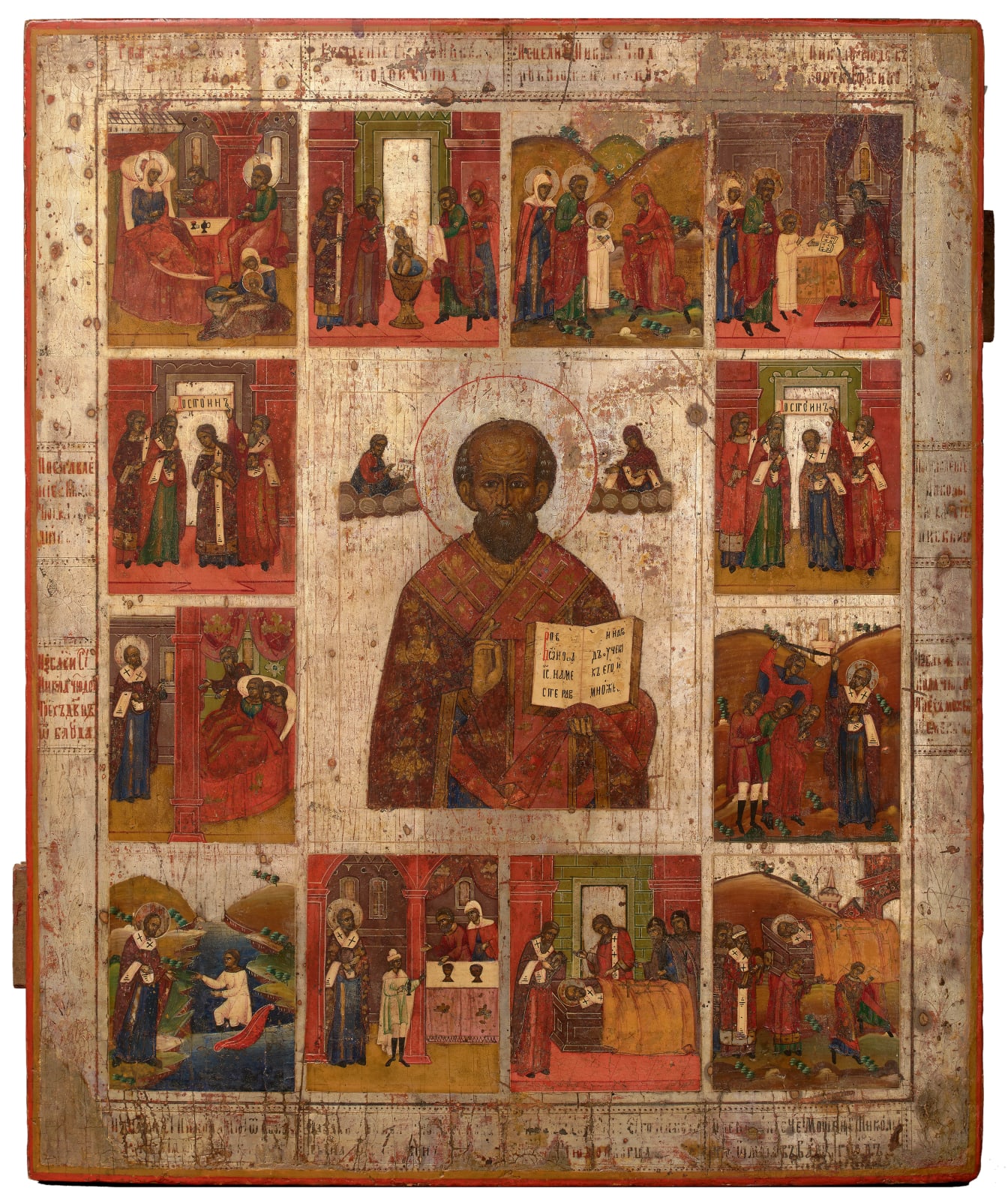Saint Nicholas and Scenes from his Life
Feast Day: 19th December
Saint Nicholas is portrayed in the centre of the icon wearing the traditional robes and stole decorated with crosses of an Orthodox bishop. He is shown full-length with his right hand raised in blessing and a open Gospel in his raised left hand. Around him are twelve scenes depicting miraculous events from his life. The high-domed forehead, short curly beard, small mouth and large ears give the easily recognisable and distinctive appearance of St Nicholas. Nicholas is flanked by Christ and the Virgin. This relates to his present at the Council of Nicaea where he attacked the heretic Arius so violently that fellow bishops had to restrain him. Some thought this behaviour was unsuitable but legend recounts that Christ and the Mother of God appeared to Nicholas that night in a dream, endorsing his conduct.
Academics regard the episodes of Nicholas’ life as pious tradition rather than history and they have demonstrated that much of it is based on the life of another saint altogether: Nicholas of Sion, who also lived near Myra but in the 6th century. However, the qualities that personify Saint Nicholas are universal and real: they raise his status to the ideal realm of myth and symbol.
Vita icons were used to initiate veneration of Saints and establish their virtues, as previously mentioned. They tended to follow a pattern of showing the difficulties the saint surmounted, the miracles attached to the saint and the triumphs of the saint. Vita icons generally show what a saint did in life, rather than miracles which occurred after their death, and demonstrate a sort of ‘roadmap’ on how to enter the heavenly kingdom.[1]
[1] Ševčenko, Nancy Patterson. "The "Vita" Icon and the Painter as Hagiographer." Dumbarton Oaks Papers 53 (1999): 149-65. Accessed August 11, 2020. doi:10.2307/1291798. p. 151

